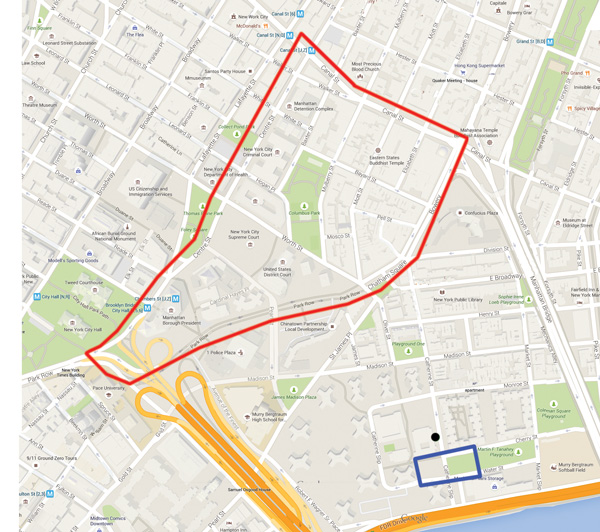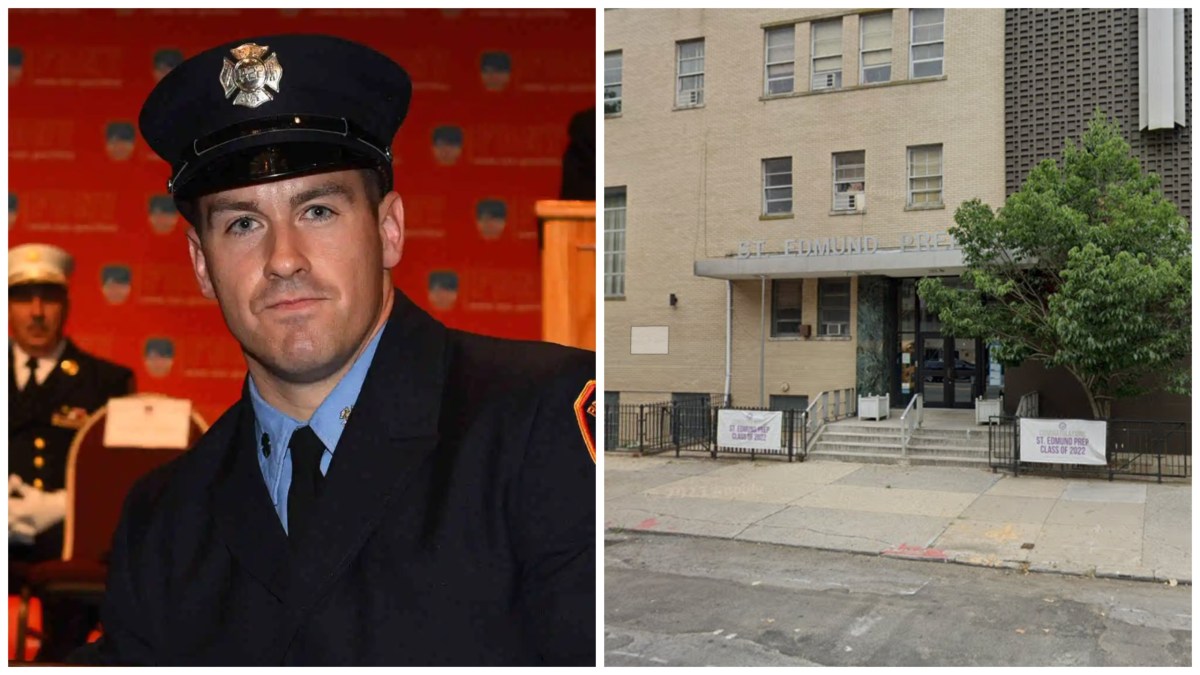
Eighth grade students at Manhattan Academy of Technology put together this chart challenging the conventional wisdom that tap dancing originated in Lower Manhattan’s Five Points. The claim’s origin is believed to be the writings of Charles Dickens.
BY MIA RUPANI | (Posted June 18, 2015 & updated June 22) Luke, an eighth grade student at Manhattan Academy of Technology has been taking tap dancing lessons for the past eight years. As a dancer, he was taught that tap dance originated in the old Five Points neighborhood near his school — a seemingly faceless claim that most regard as true.
Now, through the school’s Lower East Side Young Historians program, Luke and fellow classmates have found multiple sources to back their claim that tap may have actually began just outside of Five Points on Catherine St., the same street as M.A.T.
“Mr. Guerriero came to me with a newspaper article from The Sun’s Rays. He told me that he found a few sources that said tap dancing was created on Catherine St. instead the Five Points,” said Luke (the school requested students’ last names be withheld).
The L.E.S. Young Historians program, created by middle school teachers Alfonso Guerriero and Chris Piccigallo, focuses on local history while still meeting common core social studies reading/writing standards.
The program supplements the eighth-grade social studies curriculum that normally would not include learning about the history of the area where many of the students have grown up.
According to some historians, the Five Points neighborhood in Manhattan, which was defined as being bound by Centre St. in the west, the Bowery in the east, Canal St. in the north and Park Row in the south is seen as the area where tap originated.
For proof, historians often look to the writings of Charles Dickens, who visited Five Points in 1841. Dickens wrote about a new form of dance performed by an African-American man named William Henry Lane, otherwise known as Master Juba, at the Pete Williams Dance hall in the Five Points. Historian Tyler Anbinder, author of “Five Points”, also cited Dickens.

The M.A.T. students’ research indicates that tap dancing probably originated just outside of Five Points at the former Catherine Market Building.
Dance students like Luke are often taught about tap and the Five Points origin in class — websites such as Wikipedia and Urban Geography also give credit to the neighborhood for this discovery.
As part of their research project, students Luke, Elijah, Alice and Crystal made the decision to research the origin of tap dancing
“I started researching and I came across Thomas De Voe who wrote ‘The Market Book,’” Luke said. “When we looked more into him, we found that he was a historian and butcher who wrote about tap dancing.”
Through their research, the students believe they may have found enough proof to back their claim that tap dancing started at the former Catherine Market, which was down the street from the school between Cherry St. and Water St. near Catherine Slip (the site today is a small park). De Voe dedicates a chapter in his book to this particular market, describing a dance that African slaves performed there in the 1820s, roughly 20 years before Master Juba.
The article the student’s reference in The Sun’s Rays is titled “Where tap dancing had its start here, Catherine Street, now gray, once bright and the main thoroughfare of big business” and is dated Jan. 9, 1932.
“Thus, we find Catherine street virtually paved with stories, among them being this quaint one of how tap dancing began in New York,” the article states.
The article describes Catherine Market and the dances that slaves often performed there. It also mentions De Voe and The Market Book, and quotes him directly in the piece.
Guerriero, Piccigallo and the students have made multiple attempts to get their research noticed, but currently, they are awaiting a response.
“We will continue with this claim until we get some other feedback…We’re trying to get some notoriety for this,” said Piccigallo.
Thomas F. Defrantz, a professor of African and African American studies at Duke University, considered the student’s claim after being contacted by Downtown Express. In an email, he wrote that it would be hard to pinpoint an exact place of origin.
“I think a tussle between Five Points or Catherine Street matters little; if the students can date an actual showcase or competition for tap on Catherine Street, how great is that,” Defrantz wrote.
While one group of students continue to research tap, the rest of the class have chosen other project topics, such as food, photography and urban sports.
“Everything is supposed to take on the aspect of local history,” Piccigallo said. “So through the lens of local history, how does this research perhaps connect to our overall arching question, which is the idea of social change and how social change contributes to the idea of American history.”
Regardless of the outcome of their claim, Piccigallo and Guerriero hope students take away the importance of local history from the program.
“I take the bus here every day and I pass these buildings without realizing there’s a real story behind these objects. After class, I come home and tell my parents and they say, ‘Your grandfather worked in a similar neighborhood in the Lower East Side,’” Luke said. “The history of my life comes together through this program. It’s like nothing else I’ve had before in my learning.”

















